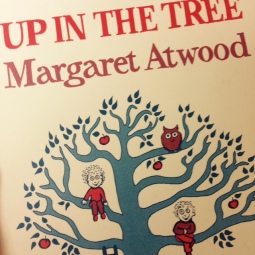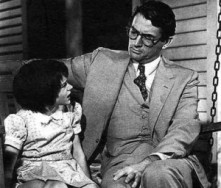I’ve been meaning to try out the brilliant blog project Top Ten Tuesday hosted by the Broke and the Bookish for such a long time now, but never got round to it. But today’s list was such a fantastic suggestion that I have finally been kicked into action. The task is to compile a list of your most read author’s. There are some writers that can be relied upon to never fail at delivering wonderful works of literature, so this is a great opportunity to highlight my favourite children’s authors.
 10 Anthony Horowitz
10 Anthony Horowitz
Anthony Horowitz output is vast. From the spy stories of Stormbreaker, to the inept detective Diamond brothers, he flits between serious adventure and biting satire of a genre. And for older teenage readers, The Killing Joke is a hilarious book about a man on a dangerous, surreal quest to find out how a joke at his mother’s expense began.
09 Eoin Colfer
I was in awe of the first Artemis Fowl novel when it cam out. The world Colfer creates is an incredibly clever take on traditional stories of fairies and goblins. Everything from the police force’s name (LEPrecon) to the genius of our anti-hero is a remarkably painstakingly thought, creating a brilliantly detailed and intricate world. Alongside the Artemis Fowl series, Colfer’s The Wish List is a fantastic book about a girl who’s died struggling to get to the after life.
08 Philip Ridley
Any child or teenager who likes the weird, dark side to children’s literature should definitely check out Philip Ridley. From the colourful world of Scribbleboy, to the moth-ridden banoffi pie in Kasper in the Glitter, Ridley’s stories are laden with gothic details and unforgettable characters.
 07 Paul Stewart & Chris Riddell
07 Paul Stewart & Chris Riddell
I’ve mentioned the weird and wonderful Edge Chronicles before, but that’s not the only world Paul Stewart and Chris Riddell created. The Muddle Earth series introduced an equally quirky and bizarre world, ideal for slightly younger readers.
06 Roger Hargreaves
Way back when I was a tiny, I absolutely adored the Mr Men and Little Miss series. Despite being tiny little books, they are fantastic stories with some of the most memorable characters.
05 Peter Clover
As a child Peter Clover was the first author I really thought of myself being a fan of. His series about Emma and her pet horse Sheltie were captivating, and I’d devour each one as soon as it was published.
Like the vast majority of the population, I adore the Harry Potter series, which were a staple part of my childhood and adolescence. As well as the seven Potter novels, she has created an amazing background to the world of Hogwarts in her 2 short pieces of fiction, Fantastic Beast and Where to Find Them, and Quidditch Through The Ages.
Now she is writing for adults, I wait with eagerness for her next Cormoran Strike novel, and lose myself in the sinister politics of Pagford village in The Casual Vacancy.
03 Jacqueline Wilson
From bullying to disabilities to mental health, Jacqueline Wilson is the master at telling stories about the difficult problems children may face. With captivating plots and a heavy dose of realism, she makes the worst things in the world seem a little more bearable.I doubt I’ve read even half of her over 100 books, but I’ve definitely had a good stab at it.
I’ve done a quick some of my favourite Jacqueline Wilson novels here if you want to find out a little more.
A staple of my childhood, nothing sends a wave of nostalgia over me more than the works of Beatrix Potter. A celebration of the British wildlife, Beatrix beautifully tells stories for the children inquisitive about the world around them. Her writing makes us look closer at the world around us, and shows us that some of the most amazing stories can come from the smallest creatures.
01 Roald Dahl
There was only ever going to be one author claiming the number one spot, and that is of course the much adored Roald Dahl. Captured dreams, ingenious woodland creatures, ever-growing Grannies, flying fruit… the list of Dahl’s incredible plots, characters, and worlds is endless. As is my love for his stories.




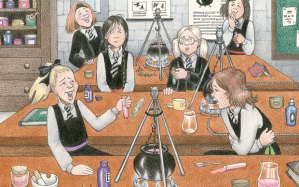 Written when Murphy was just 18, plot-wise The Worst Witch falls firmly into the traditional school story canon, seemingly influenced by series like Malory Towers, as well as the author’s own school days. It’s a gentle read, that will certainly bring a smile to young readers, while tackling some very real concerns, notably bullying and the nerves of starting a new school.
Written when Murphy was just 18, plot-wise The Worst Witch falls firmly into the traditional school story canon, seemingly influenced by series like Malory Towers, as well as the author’s own school days. It’s a gentle read, that will certainly bring a smile to young readers, while tackling some very real concerns, notably bullying and the nerves of starting a new school.
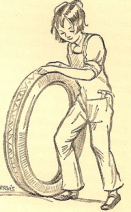

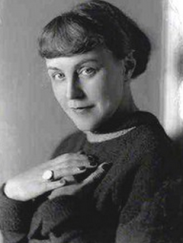
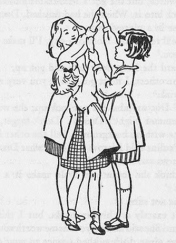


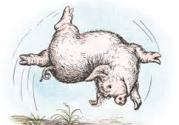 I wasn’t particularly drawn to classics when I was younger, choosing spy kids over railway children and flour babies over watery ones.
I wasn’t particularly drawn to classics when I was younger, choosing spy kids over railway children and flour babies over watery ones.


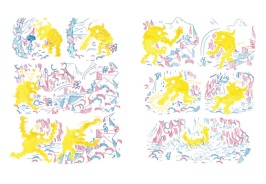


 n your heart, and carry the ability to transport you to the place you first read them. For me Beatrix Potter’s stories take me back to sitting on my sister’s bed as my dad read us stories each night.
n your heart, and carry the ability to transport you to the place you first read them. For me Beatrix Potter’s stories take me back to sitting on my sister’s bed as my dad read us stories each night.


 illustrations, to a 1920s Alice in a drop-waist dress, the drawings of a central character reflect how society expected a young girl to look. And of course, Alice has travelled across the globe as well, meaning her traditional gown and apron has been replaced, most dramatically in a Swahili edition of the text where her heroine dons a Kanga.
illustrations, to a 1920s Alice in a drop-waist dress, the drawings of a central character reflect how society expected a young girl to look. And of course, Alice has travelled across the globe as well, meaning her traditional gown and apron has been replaced, most dramatically in a Swahili edition of the text where her heroine dons a Kanga.

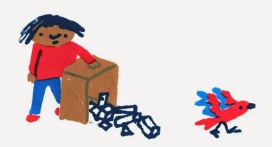
 eliness, more and more of the page is given over to the monochrome jaggedy lines, before colour seeps back in as she finds a new playmate. It might sound like a simple idea, but it’s executed beautifully to show us just how lovely the world can be when we have friends to play with. As a jaded adult this might sound unimportant, but to young readers, The Girl With The Parrot On Her Head captures one of the most important aspects of childhood- making (and keeping) good friends.
eliness, more and more of the page is given over to the monochrome jaggedy lines, before colour seeps back in as she finds a new playmate. It might sound like a simple idea, but it’s executed beautifully to show us just how lovely the world can be when we have friends to play with. As a jaded adult this might sound unimportant, but to young readers, The Girl With The Parrot On Her Head captures one of the most important aspects of childhood- making (and keeping) good friends.


 award for his stunning picture book
award for his stunning picture book 